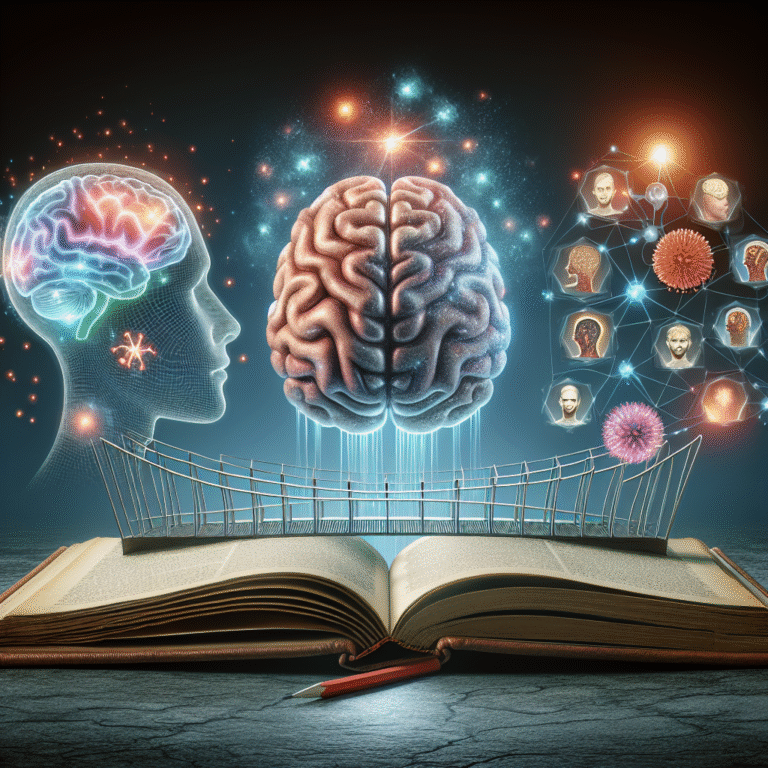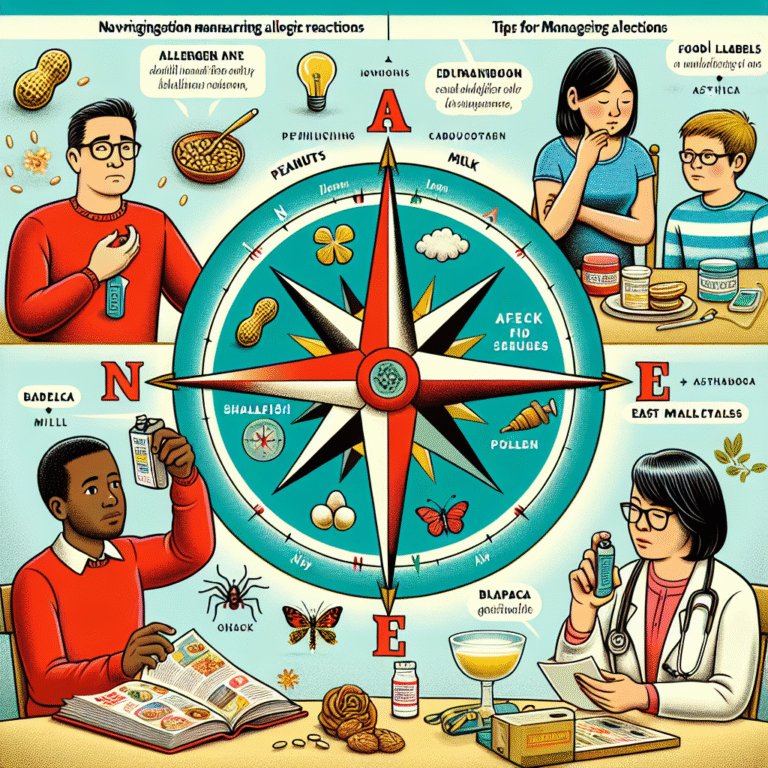
Introduction
Imagine walking through a vibrant forest: the rustling leaves, the chirping birds, and the variety of aromas that fill the air. Every sensation you experience is a result of complex processes happening within your body, but how do these processes work? Understanding The Science of Sensation: Key Concepts in Psychophysics can unlock the mysteries behind how we perceive the world around us. This field of study delves into the relationship between physical stimuli and the sensations they evoke, bridging psychology, neuroscience, and physics.
In an age where understanding human behavior and perception is crucial—be it in marketing, education, or healthcare—the science behind sensation can provide invaluable insights. This article will explore key concepts in psychophysics, integrating case studies and practical applications that illustrate just how essential this field is in navigating our sensory experience.
Understanding Psychophysics
What is Psychophysics?
Psychophysics is the scientific study of the relationship between stimuli and the sensations and perceptions they produce. It investigates how physical properties—like brightness, weight, and volume—correspond to our sensory experiences. This field was largely pioneered by psychologists such as Gustav Fechner and Ernst Weber in the 19th century, establishing foundational concepts that are still relevant today.
Key Terms in Psychophysics
- Absolute threshold: The minimum level of stimulus intensity needed for detection by the senses.
- Difference threshold: The smallest detectable difference between two stimuli, often referred to as just noticeable difference (JND).
- Signal detection theory: A framework for understanding how and when we discern a signal from background noise.
The Role of Sensory Organs
Sensory organs serve as gateways to the world of perception. Let’s take a closer look at how different sensory systems contribute to our overall experience.
Vision
Vision is perhaps the most studied sense. Light stimuli are absorbed by photoreceptors (rods and cones) in the retina, leading to the perception of color and brightness. The concept of threshold plays a significant role here, as demonstrated by experiments involving the detection of faint light sources in dark environments.
Case Study: Dark Adaptation
A classic case study involves dark adaptation, where the eye adjusts to low light over time. For example, a person entering a dark movie theater from the bright outdoors will initially struggle to see but will gradually adjust as photopigments regenerate in the retina. This phenomenon illustrates the absolute threshold and how prolonged exposure to a stimulus can modify our sensory sensitivity.
Hearing
The auditory system translates sound waves into neural signals. This process involves the detection of sound frequencies and intensities, key components that psychophysics examines in understanding how we hear.
Case Study: The Ears and the Environment
Consider how musicians adjust their playing volume based on the acoustic properties of a room. A singer performing in a large hall must amplify their voice significantly to be heard compared to a small, enclosed space. This practical application of psychophysics highlights the importance of both absolute and difference thresholds in varying auditory environments.
The Just Noticeable Difference
One of the fundamental principles in psychophysics is the just noticeable difference (JND). This concept posits that the amount of change needed for a person to notice a difference between two stimuli is a constant ratio of the original stimulus intensity.
Weber’s Law
Weber’s Law explains the proportionality of JND to the initial stimulus intensity. For example, if a musician must increase the volume of their guitar by 10% in a small room to notice a difference, the increase might need to be significantly higher in a larger venue.
Case Study: Pricing Strategies
In marketing, understanding JND can assist in pricing strategies. Retailers often adjust prices slightly, just above a psychological barrier (like changing from $19.99 to $20.00), to make it more noticeable. Utilizing this knowledge boosts sales while staying in tune with consumer perception.
Advanced Concepts in Psychophysics
Multisensory Integration
While discussing The Science of Sensation: Key Concepts in Psychophysics, it’s crucial to note that our sensory systems do not operate in isolation. Multisensory integration refers to the process by which our brain combines information from different senses to create a cohesive experience.
Case Study: The McGurk Effect
The McGurk effect illustrates how visual cues can alter auditory perception. When a person sees a video of someone saying "ba" while hearing "fa," most will hear "fa." This intertwines vision and hearing, showcasing the unconscious blending of sensory information—a key component of our understanding in psychophysics.
Applications of Psychophysics
Clinical Implications
Understanding psychophysical principles has significant implications in clinical psychology and therapy. For instance, exposure therapy uses gradual increases in stimulus intensity to help patients confront fears. By closely monitoring thresholds, therapists can tailor experiences that are effective yet manageable.
Table 1: Psychophysical Principles in Clinical Settings
| Principle | Application | Example |
|---|---|---|
| Absolute Threshold | Fear exposure | Gradual exposure to height for vertigo |
| Difference Threshold | Sensory integration therapy | Tuning sensitivity to environmental cues |
| JND | Adjusting fear responses | Incremental exposure to phobic stimuli |
Technology and Psychophysics
Technological advancements have greatly expanded the scope of psychophysical research. Innovations like functional MRI technology allow researchers to visualize brain activity during sensory processing, offering groundbreaking insights into how we perceive and respond to stimuli.
Case Study: Neuroimaging and Sensory Processing
Research involving neuroimaging has highlighted specific brain regions activated during varying sensory experiences. For example, studies show that different areas light up when a person listens to music versus when they engage in conversation. This research deepens our understanding of sensory processing and its psychological implications.
Conclusion
The exploration of The Science of Sensation: Key Concepts in Psychophysics reveals just how intricately our senses are woven into the fabric of our daily lives. From marketing strategies to therapeutic practices, the insights from psychophysics create pathways for enhancing awareness and understanding of human perception.
By unraveling these concepts, we can not only appreciate the richness of our sensory world but also harness this knowledge to improve communication, education, and personal well-being. As you navigate your own experiences, consider how various stimuli shape your reality and how understanding this relationship could lead to enhanced perception and engagement with the world around you.
FAQs
1. What is the main focus of psychophysics?
Psychophysics investigates the relationship between physical stimuli and the sensations they produce. It examines how we perceive changes in our sensory environment.
2. How do we measure absolute thresholds in psychophysics?
Absolute thresholds are assessed using techniques like method of limits, method of constant stimuli, and method of adjustment, to find the lowest level at which a stimulus can be detected.
3. What psychological principles does psychophysics rely on?
Psychophysics relies on principles such as Weber’s Law and the concept of JND to explain how we perceive differences in stimuli.
4. How does multisensory integration impact our perceptions?
Multisensory integration impacts perception by combining information from various senses, enhancing our overall experience and sometimes altering how we interpret stimuli, as evidenced by effects like the McGurk Effect.
5. In what ways is psychophysics applied in marketing?
Psychophysical principles are applied in marketing strategies, particularly in pricing and advertisement designs, where understanding consumer perception of changes can influence buying decisions.
By diving deeper into The Science of Sensation: Key Concepts in Psychophysics, we can better appreciate the nuances and complexities of human perception, ultimately leading to richer and more fulfilling interactions with the world around us.

















